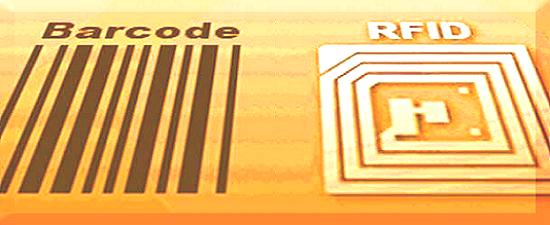Barcodes, QR codes, and RFID are all technological systems for storing large amounts of data in a compact format. With products moving faster through diverse channels, companies use these technologies to keep a track of their products to provide all product related information. However, there are some clear distinctions between the three systems.

It’s All About Utility
Barcode, which is probably the oldest of the three technologies, is particularly popular in retail and manufacturing industry. It is primarily used for storing product specific information and is used in selling and managing inventory.
QR codes, on the other hand, are used by various industries to provide additional information on a product or company or subject. One can find QR codes not just on products but also on marketing and promotional material such as print advertisements, brochures, business cards, etc. QR codes would provide links to the company website and social media networks such as Facebook, LinkedIn and Twitter.
RFID is also used across industries. It is generally used in the form of tags that are attached to items or boxes and pallets. RFID technology is primarily used for tracking large quantities of data that needs to be moved between locations.
Technology Is The Key
Barcodes are based on the most traditional technology systems, out of the three systems being discussed. Since it is so widely used, it is much cheaper to get barcode technology as well as barcode scanners.
QR codes have evolved from barcode technology systems. However, QR codes can store larger amount of data as compared to barcodes. Also, QR codes can be read through QR code scanners as well as barcode scanner applications available on smartphones. Apart from the cost of print media, costs related to QR code are very low as one can create a QR code design online for free.
RFID technology has also existed for decades but it is also the most complex. RFID tag with its small antenna emits a radio frequency signal that is picked up and read by a special wireless RFID reader, conveying information from the tag about the item it is attached to. RFID technology is also much faster and effective as compared to the barcodes and QR codes.
Adopt The Best Strategy
Barcodes are relatively inexpensive and hence, are widely adopted in retail, manufacturing, transport and shipping. Barcodes are used to manage large filing systems, library books and a number of other functions where large numbers of items need to be tracked efficiently. Their ease of use will keep their adoption rates high.
Even though, QR codes have existed for decades, their adoption has seen significantly increased in recent years. This substantial growth has been on account of higher adoption and sales of smartphones. QR codes have infinite number of uses, particularly in marketing and hence, their adoption is expected to remain high among large as well as small companies.
RFID system is quicker, more effective and efficient than barcodes, when it comes to large quantities of items. Yet, its adoption is mainly witnessed by large organizations. Most small businesses find it too complex and cost ineffective. However, with RFIDs becoming easier and faster to implement at lesser costs, one could witness a healthy growth of this system in the coming years.
This is a guest post by Mathew Donald.










Great introductory article on the basic differences and applications of these three systems! Perhaps a follow-up post on the differing technologies between the three maybe? 😉 Thanks!